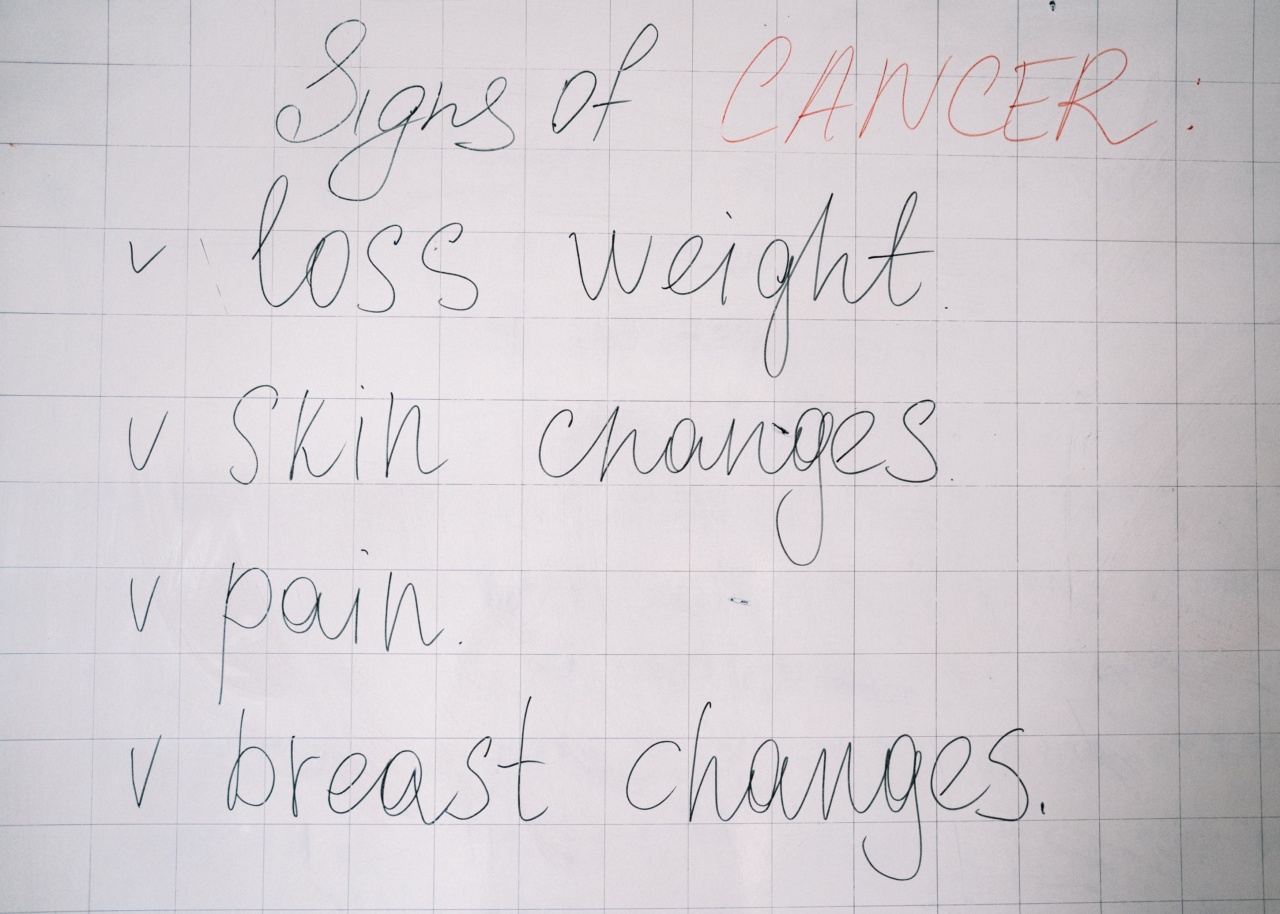Prostate cancer is one of the most common types of cancer in men, with more than 3 million cases diagnosed every year, worldwide.
The prostate gland is located in the male reproductive system, and its main function is to produce and secrete seminal fluid. Prostate cancer usually develops slowly and may not present any symptoms until it has spread to other areas of the body. However, early detection of prostate cancer can significantly increase the chances of successful treatment.
In this article, we will discuss the symptoms of prostate cancer that you should watch out for.
Symptoms of Prostate Cancer
The signs and symptoms of prostate cancer may be different for each man. Here are some of the most common symptoms of prostate cancer you should be aware of:.
1. Difficulty Urinating
A common symptom of prostate cancer is difficulty urinating. This can manifest as a weak urine flow, a need to strain in order to empty the bladder, or a feeling of incomplete bladder emptying.
These symptoms can also be caused by an enlarged prostate, which is a non-cancerous condition known as benign prostatic hyperplasia (BPH), so it is important to see a doctor if you experience these symptoms.
2. Frequent Urination
If you find that you are urinating more often than usual, particularly during the night, this could be a sign of prostate cancer.
Again, this symptom may also be caused by an enlarged prostate, so it is important to get checked out by a healthcare professional.
3. Blood in Urine or Semen
Blood in urine or semen can be a sign of prostate cancer. This symptom can be alarming, but it’s important to remember that there are many other conditions that can cause this symptom, such as an infection or inflammation of the prostate gland.
However, you should always get this symptom checked out by a doctor to be sure.
4. Erectile Dysfunction
Erectile dysfunction (ED) is a common condition that affects men of all ages. However, if you find that you are having persistent problems with achieving or maintaining an erection, this could be a sign of prostate cancer.
ED can also be caused by a range of other factors, such as stress or anxiety, so it’s best to get checked out by a healthcare professional to rule out any underlying medical conditions.
5. Pain or Discomfort in the Pelvis or Lower Back
Pain or discomfort in the pelvis or lower back can be a sign of prostate cancer, particularly if it is combined with any of the other symptoms listed above. This pain can be dull or sharp, and may come and go or be constant.
6. Unexplained Weight Loss
If you are experiencing unexplained weight loss, this could be a sign of prostate cancer.
This symptom is typically only seen in advanced cases of the disease, so it is important to get checked out by a doctor as soon as possible if you notice any unexplained weight loss.
7. Fatigue
Prostate cancer can cause fatigue, which may be mild or severe. This symptom is often caused by anemia, which is a condition where the body doesn’t have enough red blood cells. Anemia is a common complication of cancer and cancer treatment.
8. Loss of Appetite
If you are experiencing a loss of appetite, this could be a sign of prostate cancer. This symptom is often seen in advanced cases of the disease and may be accompanied by unexplained weight loss and fatigue.
9. Swelling in the Legs or Feet
Swelling in the legs or feet can be a sign of prostate cancer. This symptom is often caused by the cancer spreading to the lymph nodes in the pelvis, which can cause a buildup of fluid known as lymphedema.
10. Bone Pain
Prostate cancer can spread to the bones, causing bone pain. This pain can be a dull ache or a sharp pain and may be felt in the back, hips, or thighs. This symptom is often seen in advanced cases of prostate cancer.
Conclusion
If you experience any of the symptoms listed above, it’s important to speak to your healthcare provider. Prostate cancer is a serious condition, but it can be successfully treated if caught early.
Regular checkups with your doctor and getting screened for prostate cancer can help you detect the disease in its early stages, when treatment options are most effective.




























